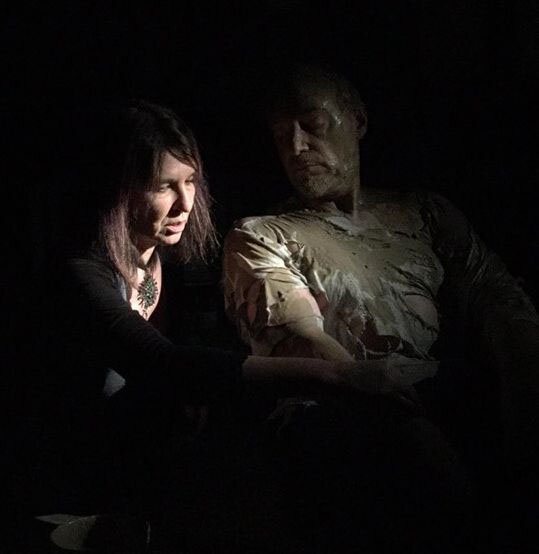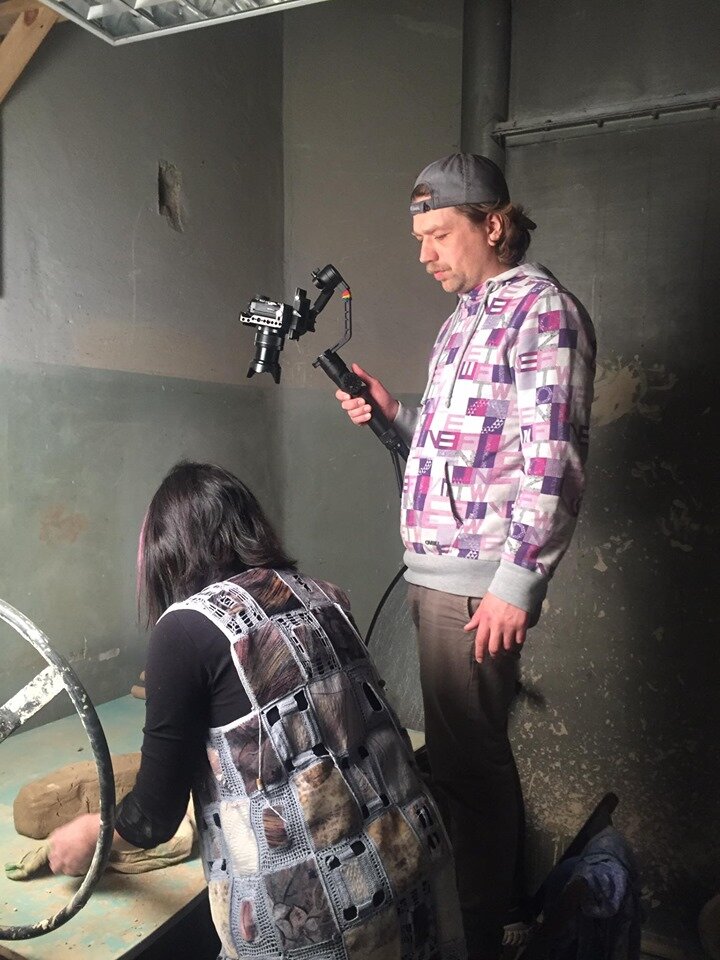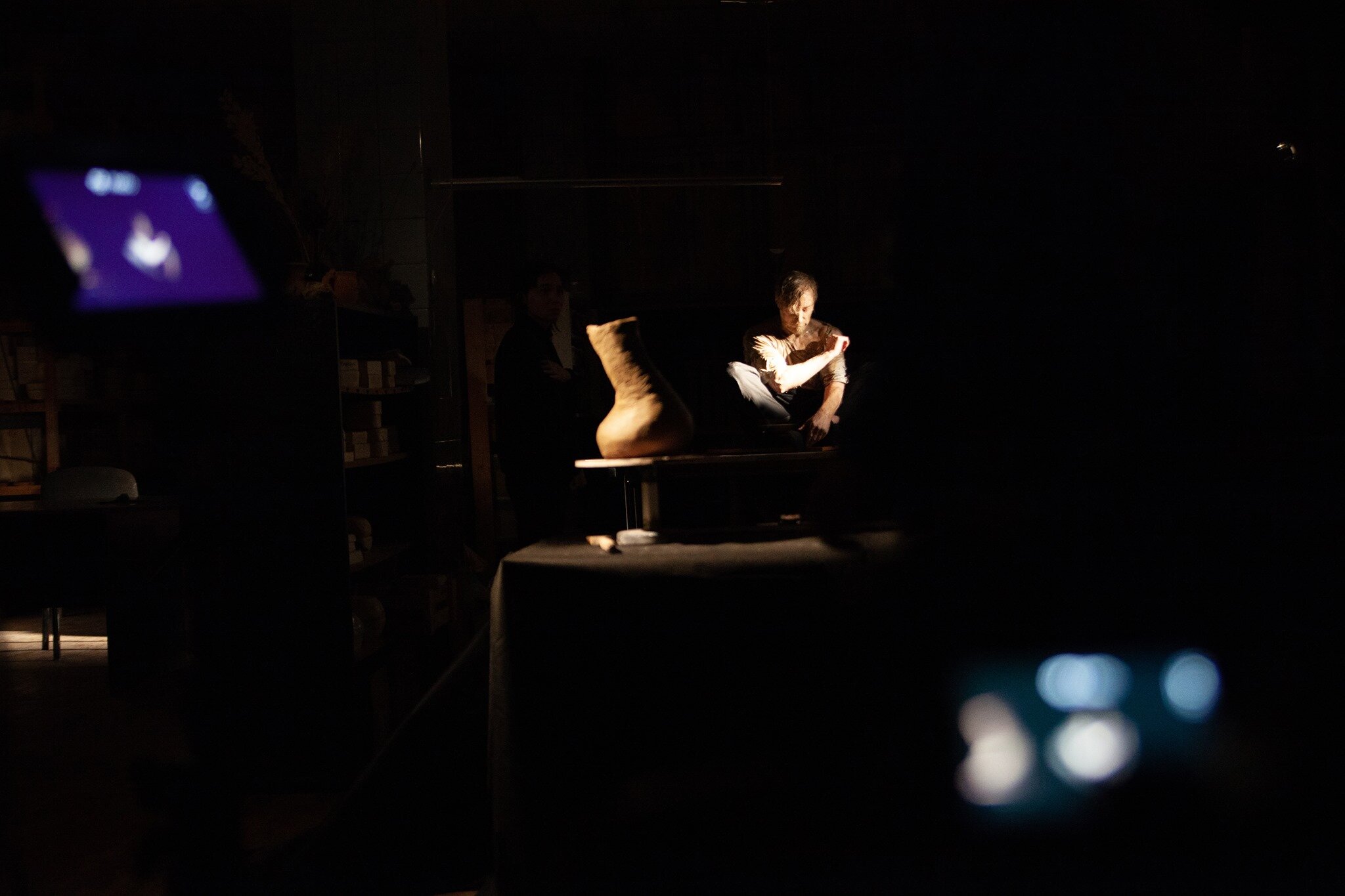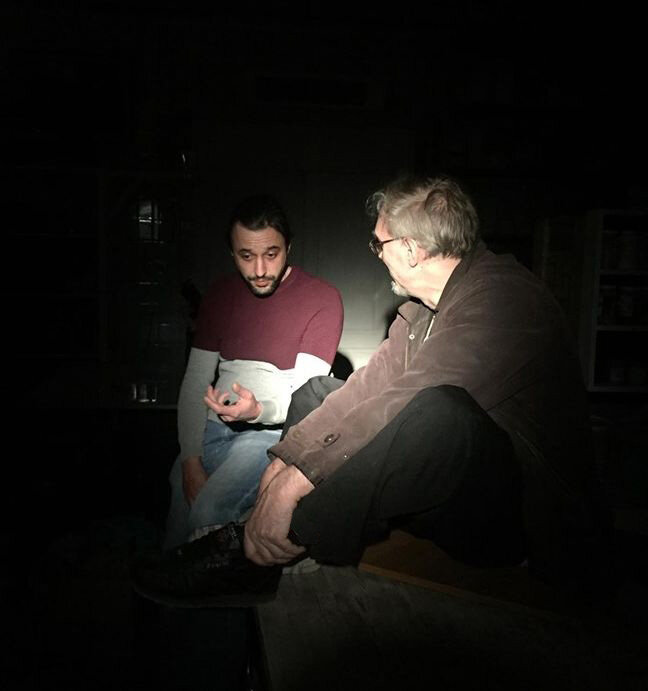Evgeny Masloboev / Евгений Маслобоев
Of all the languages that exist on the planet Earth, the language of musical improvisation is the closest to the language of the Garden of Eden.
-- Evgeny Masloboev
Cinema news: The virus is rampant in the streets, in people’s souls and minds. Meanwhile, in Irkutsk, Russia, the process of creating a feature musical film "Star Alphabet" begins. Four film shorts, "Adam", "Light", "Water", and "String Theorem" are united by the idea of the process of searching for the alphabet of a forgotten language – the language with which all living beings previously communicated, including plants, animals, angels, God, and man in the Garden of Eden. The authors of this movie epic suggest that such a proto-language could be the language of the universal vibrational field. And music is now our only memory of this language, its pale shadow.
The first film short was born out of my desire to play music on a ceramic tile… And then the wheel of associations was spinning: tile...clay...Adam. In the basement of the store of ceramic tiles and finishing materials, "Red Line," courtesy of Arkady Olgin, a wonderful sample of ceramic music was created – the first composition of the film "Alphabet". The second musical piece was born in the depths of the ceramic workshop "Les,” thanks to the outstanding assistance of Andrey Zhuravlev.
The filmmakers include: Evgeny Masloboev, Ivan Milov, Stepan Turik, Olga Kurlykina, Izolda Ferlikh, Lila Kananykhina, Polina Turik, Irina Lipovitskaya, Albert Faskhutdinov and Dmitry, Svetlana, and Ksenia of the Milov family.
(Evgeny will continue to provide updates on this project as more progress is made.)
Евгений Маслобоев: «Из всех языков, существующих на планете Земля, язык музыкальной импровизации – самый близкий к языку Эдемского Сада…»
Новости кинематографа. На улицах, в душах и умах свирепствует вирус. А тем временем в Иркутске начинается процесс создания художественного музыкального фильма «Алфавит» (рабочее название «Звёздная Азбука»). Четыре киноновеллы: «Адам», «Свет», «Вода», «Теорема струн» объединены идеей процесса поиска алфавита забытого языка – языка, с помощью которого общались все живые существа: растения, ангелы, животные, Бог и Человек в Эдеме – райском саду. Авторы этой кино-эпопеи предполагают, что подобным праязыком мог быть язык всеобщего вибрационного поля. И музыка – постфактум – это лишь наше воспоминание об этом языке, его бледная тень.
Новелла «Адам». Евгений Маслобоев рассказывает: «Идея новеллы «Адам» родилась из моего желания поиграть музыку на керамической плитке… А дальше – завертелось колесо ассоциативного ряда: плитка – глина – Адам…». В подвале магазина керамической плитки и отделочных материалов «Красная Линия», любезно предоставленного Аркадием Ольгиным, был создан замечательный образчик керамической музыки – первая композиция фильма «Алфавит». Вторая музыкальная пьеса была рождена в недрах керамической мастерской «Les», благодаря огромному содействию Андрея Журавлёва.
Творческая группа создателей фильма: Евгений Маслобоев, Иван Милов, Stepan Turik, Ольга Курлыкина, Izolda Ferlikh, Лиля Кананыхина, Полина Турик, Ирина Липовицкая, Альберт Фасхутдинов и Дмитрий, Светлана, Ксения – семья Миловых.







